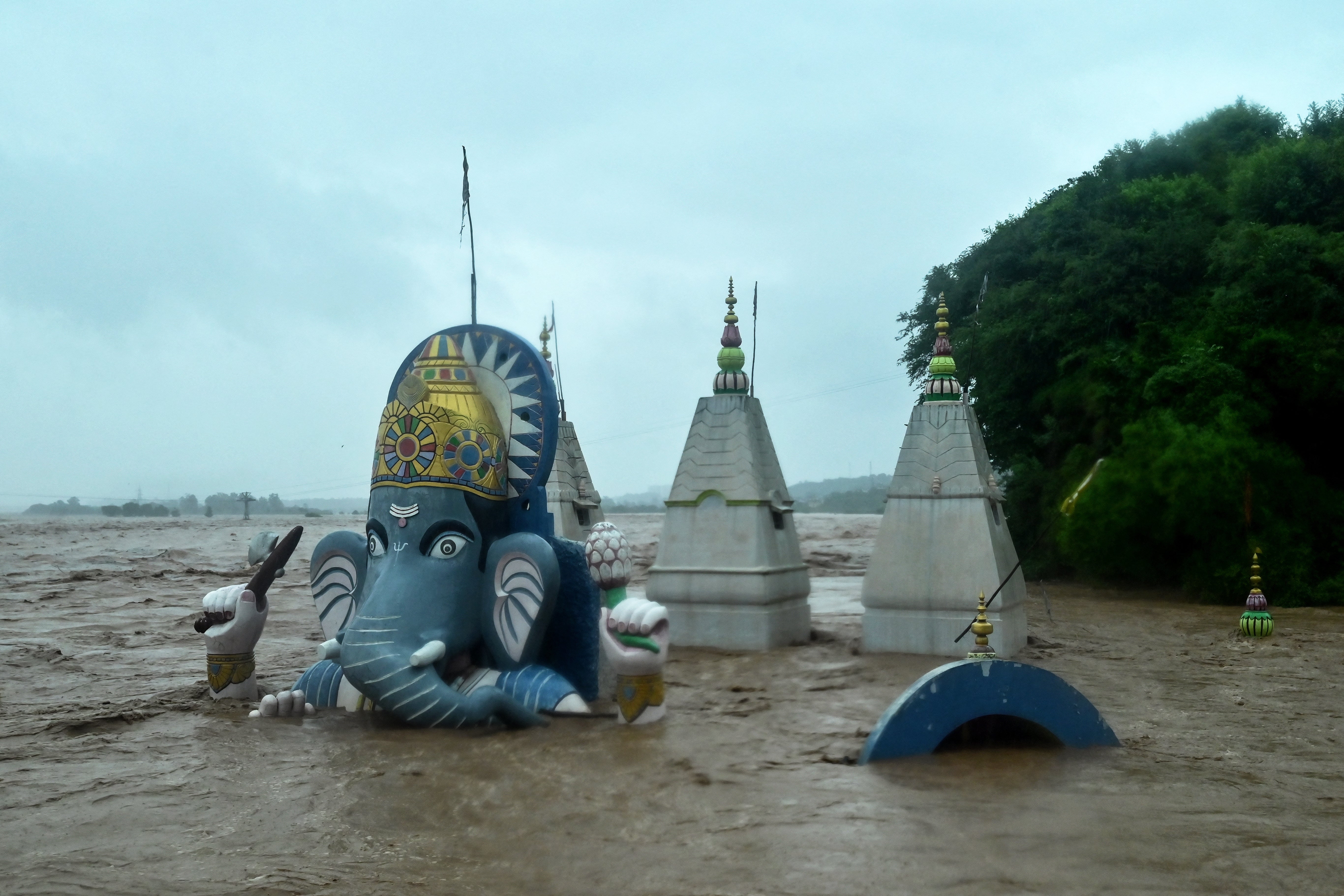More than 200,000 people were evacuated in Pakistan’s Punjab province as “exceptionally high” flooding submerged towns, farms and heritage sites.
In Narowal, near the Indian border, floodwaters engulfed the Kartarpur Sahib gurdwara, one of the most important shrines in Sikhism.
Images showed the white domes and courtyard of the gurdwara almost completely submerged, with floodwaters also inundating the adjoining Kartarpur Corridor, a special zone for pilgrims to cross the border without a visa.

The flooding also devastated swathes of the Indian state of Punjab.
The impact was felt even at the Wagah-Attari border crossing, where footage showed the daily Beating Retreat ceremony performed in ankle-deep water on the Pakistani side.
Pakistan’s National Disaster Management Authority said the Ravi, Chenab and Sutlej rivers had risen to “extremely high” levels amid heavy rains battering South Asia, and urged people to avoid riverbanks and drains.
Authorities said the situation had been worsened by more heavy rain and by water releases from upstream dams in India.
Despite frozen ties and the suspension of the Indus Water Treaty, India formally warned Pakistan of high flood risk downstream, allowing the neighbour’s disaster response agencies to mobilise troops and begin moving families from low-lying areas.
On Thursday, rescuers with boats were moving through submerged villages, ferrying stranded families and their livestock to higher ground. In Kasur district of Pakistan, some 14,000 people were evacuated, while in Bahawalnagar nearly 90,000 were taken to safety, according to provincial officials.
.jpg)
Army units were called in at least seven districts, with helicopters used to drop supplies. Aid agencies converted schools into shelters as floodwaters continued to rise.
The flooding follows days of intense monsoon rain, with meteorologists reporting Sialkot’s heaviest 24-hour rainfall in nearly half a century.
In Indian Punjab, four boys swept away towards the border were dramatically rescued by soldiers after they managed to cling to a tree.
Further north in Jammu, landslides along a pilgrimage route to the Hindu shrine of Vaishno Devi left at least 30 people dead, while flash floods cut highways and washed away bridges.

Pakistani prime minister Shehbaz Sharif said federal support would prioritise drainage and relief in Lahore, Sialkot and Gujrat as more rain was forecast in the coming days.
Pakistan has reported more than 800 flood-related deaths since late June, half of them in August alone.
Scientists have warned that the climate crisis is making South Asia’s monsoons more intense and erratic. In 2022, floods left a third of Pakistan under water, killed about 1,800 people and caused £23bn in damage.

